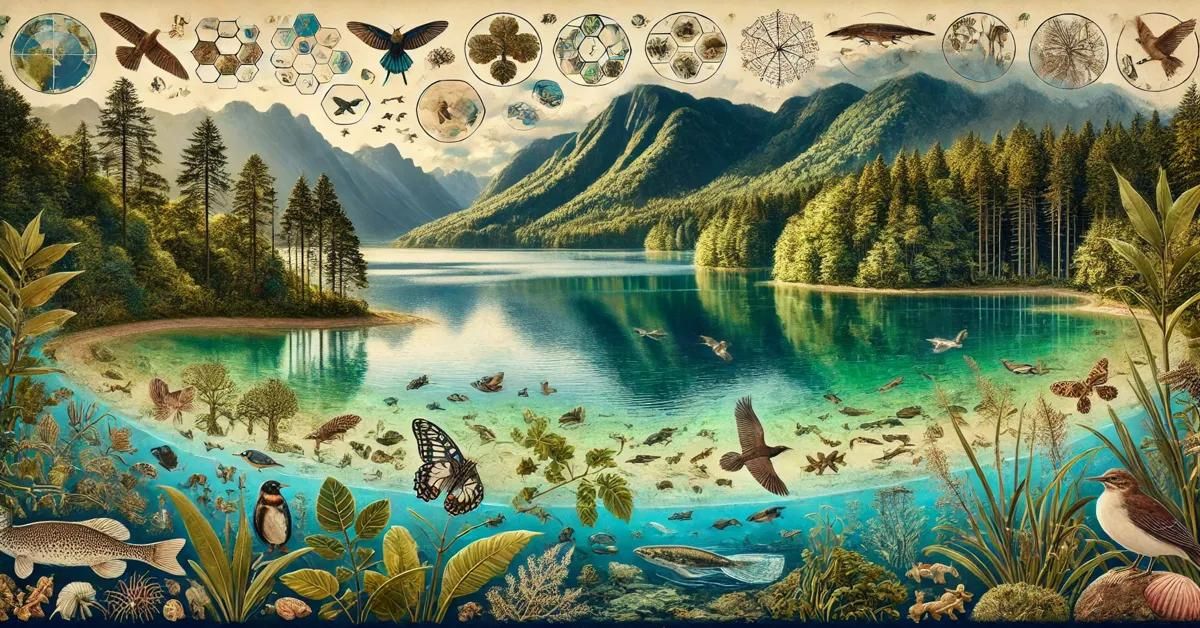Introduction
Laurel Lakes, often nestled in serene landscapes, are vital ecosystems that support a diverse array of plant and animal life. These freshwater bodies, characterized by their unique flora and fauna, play a crucial role in regional biodiversity, water quality, and climate regulation. Understanding the environmental significance of Laurel Lakes requires an exploration of their ecological functions, the threats they face, and the conservation efforts aimed at preserving these valuable habitats.
This article delves into the multifaceted aspects of Laurel Lakes, focusing on their formation, ecological importance, water quality, challenges posed by human activity and climate change, and ongoing conservation initiatives. By highlighting the significance of these ecosystems, we aim to foster a deeper appreciation for Laurel Lakes and encourage sustainable practices that protect these natural treasures for future generations.
1. The Formation of Laurel Lakes
Laurel Lakes are typically formed through a combination of geological, hydrological, and climatic processes. Understanding how these lakes come into existence provides insight into their ecological characteristics and significance.

1.1. Geological Processes
The formation of Lakes often begins with geological processes such as glaciation, tectonic activity, or volcanic activity, which shape the landscape and create depressions that can collect water.
- Glacial Lakes: Many in North America were formed during the last Ice Age when glaciers carved out depressions in the earth. As glaciers retreated, they left behind lakes that are now rich in nutrients and biodiversity.
- Tectonic Activity: In some regions, tectonic forces can create basins that become lakes. For example, lakes formed in tectonic rift zones often exhibit unique geological characteristics, including specific mineral compositions in the water.
- Volcanic Activity: Volcanic lakes may form in craters left by eruptions. These lakes often have high mineral content and can support unique ecosystems.
1.2. Hydrological Influences
The hydrology of Laurel Lakes is shaped by various factors, including precipitation, groundwater flow, and surrounding watersheds.
- Watershed Dynamics: The watershed surrounding Laurel Lake plays a crucial role in determining water quality and quantity. Watershed management practices are essential to maintaining the health of the lake.
- Groundwater Recharge: Many Lakes are fed by groundwater, which helps regulate their water levels. The interaction between surface water and groundwater is vital for sustaining aquatic ecosystems.
- Precipitation Patterns: Seasonal rainfall and snowmelt influence water levels in Lakes, affecting their ecological balance and supporting various habitats.
2. Ecological Importance of Laurel Lakes
Laurel Lakes are essential ecosystems that provide habitat for a diverse array of species and contribute to the health of surrounding environments. Their ecological significance can be examined through their role in biodiversity, water quality, and climate regulation.
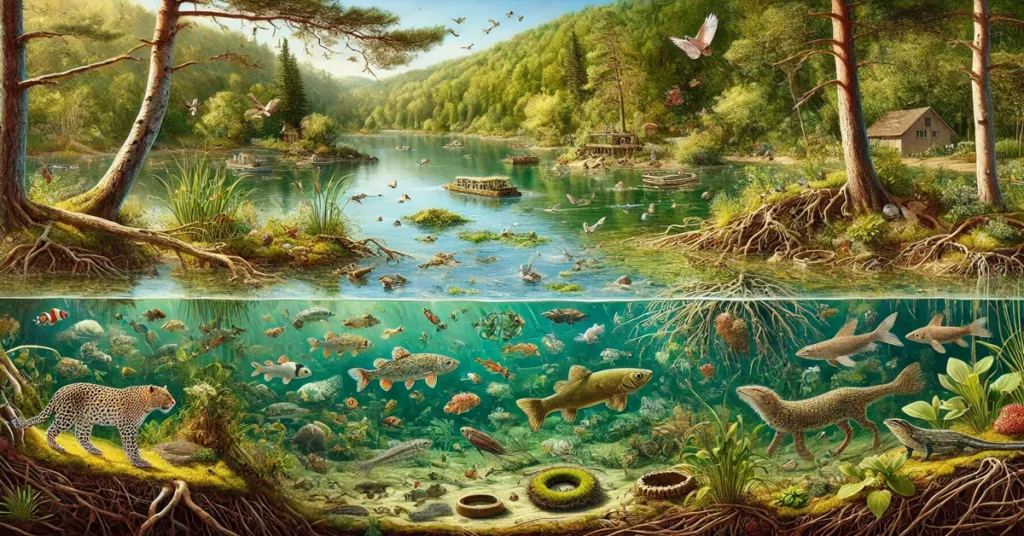
2.1. Biodiversity Hotspots
Lakes supports a wide range of species, including fish, amphibians, birds, and aquatic plants. The diversity of life found in these ecosystems is critical for maintaining ecological balance.
- Aquatic Species: Many Laurel Lakes are home to various fish species, such as bass, trout, and perch. These fish contribute to the lake’s food web and play a vital role in nutrient cycling.
- Wetland Ecosystems: The areas surrounding Laurel Lakes often include wetlands, which provide habitat for amphibians and migratory birds. Wetlands are crucial for biodiversity, serving as breeding grounds and nurseries for many species.
- Flora Diversity: The unique conditions of Laurel Lakes foster diverse aquatic plant communities, including submerged, floating, and emergent vegetation. These plants provide food and shelter for aquatic organisms and contribute to the overall health of the lake.
2.2. Water Quality and Filtration
Lakes play a vital role in maintaining water quality through natural filtration processes.
- Nutrient Cycling: Aquatic plants and microorganisms in Lakes help cycle nutrients, breaking down organic matter and preventing excessive nutrient buildup that can lead to harmful algal blooms.
- Water Filtration: The sediments and vegetation in Lakes act as natural filters, removing pollutants and sediments from the water. This filtration process contributes to clean and clear water, essential for aquatic life and human use.
2.3. Climate Regulation
Lakes contribute to climate regulation by influencing local weather patterns and carbon cycling.
- Microclimate Creation: The presence of water bodies can create microclimates that moderate temperatures in surrounding areas. This effect can support diverse ecosystems and provide habitat for various species.
- Carbon Sequestration: Aquatic plants and sediments in Laurel Lakes store carbon, helping to mitigate climate change. Wetlands and lakes play a crucial role in global carbon cycling, contributing to climate resilience.
3. Threats to Laurel Lakes
Despite their ecological importance, Laurel Lakes face numerous threats from human activities, climate change, and pollution. Understanding these challenges is crucial for implementing effective conservation measures.
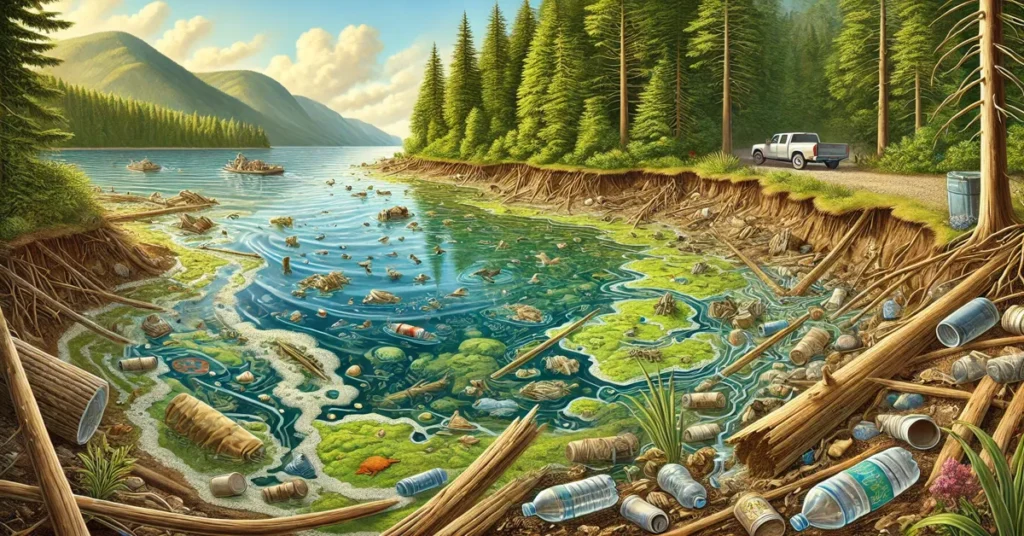
3.1. Pollution
Water quality in Laurel Lakes can be severely impacted by pollution from various sources.
- Nutrient Runoff: Agricultural practices, urban development, and landscaping can lead to nutrient runoff, introducing excess nitrogen and phosphorus into the lakes. This nutrient influx can cause algal blooms, depleting oxygen levels and harming aquatic life.
- Chemical Contaminants: Pesticides, herbicides, and heavy metals can enter Laurel Lakes through runoff, posing risks to wildlife and disrupting the delicate balance of the ecosystem.
- Wastewater Discharge: Improperly managed wastewater can introduce pathogens and pollutants into Laurel Lakes, threatening both human health and aquatic ecosystems.
3.2. Habitat Loss
Habitat loss is a significant threat to the health and biodiversity of Laurel Lakes.
- Development Pressure: Urbanization, agriculture, and industrial development around Laurel Lakes can lead to habitat fragmentation and destruction. The conversion of natural landscapes into developed areas reduces the available habitat for wildlife.
- Wetland Drainage: Wetlands surrounding Laurel Lakes are often drained for agricultural use or development, leading to the loss of critical habitat and ecosystem services.
3.3. Climate Change
Climate change poses a growing threat to Laurel Lakes, impacting water levels, temperatures, and the timing of seasonal events.
- Altered Hydrology: Changes in precipitation patterns and increased evaporation rates can lead to fluctuating water levels in Laurel Lakes. This variability can disrupt aquatic habitats and affect species reliant on stable water conditions.
- Temperature Increases: Rising water temperatures can alter the distribution of aquatic species and increase the likelihood of harmful algal blooms. Warmer temperatures can also affect the breeding and migration patterns of fish and wildlife.
- Extreme Weather Events: Increased frequency of extreme weather events, such as heavy rainfall and storms, can lead to erosion, sedimentation, and habitat destruction in and around Laurel Lakes.
4. Conservation Efforts for Laurel Lakes
Given the numerous threats facing Lakes, various conservation efforts have been implemented to protect these vital ecosystems. These initiatives involve collaboration among government agencies, non-profit organizations, local communities, and researchers.

4.1. Water Quality Monitoring
Regular monitoring of water quality is essential for understanding the health of Laurel Lakes and identifying potential issues.
- Data Collection: Government agencies and environmental organizations often conduct water quality assessments to measure parameters such as nutrient levels, temperature, and dissolved oxygen. This data helps inform management decisions and conservation strategies.
- Community Involvement: Citizen science initiatives encourage local residents to participate in water quality monitoring efforts. Engaging the community fosters a sense of stewardship and raises awareness about the importance of protecting Laurel Lakes.
4.2. Habitat Restoration
Restoration projects aim to improve the health and resilience of Lakes and their surrounding habitats.
- Wetland Restoration: Initiatives to restore wetlands can enhance habitat availability for wildlife and improve water quality. Restored wetlands can serve as natural buffers, filtering pollutants and absorbing excess nutrients before they enter the lakes.
- Reforestation Projects: Planting native trees and vegetation along the shorelines of Laurel Lakes can help stabilize banks, reduce erosion, and improve habitat for aquatic and terrestrial species.
4.3. Sustainable Land Use Practices
Promoting sustainable land use practices around Lakes is essential for minimizing human impact on these ecosystems.
- Best Management Practices (BMPs): Implementing BMPs in agricultural and urban areas can reduce nutrient runoff and minimize pollution. These practices may include buffer strips, cover crops, and proper waste management.
- Zoning Regulations: Local governments can establish zoning regulations that protect sensitive habitats and limit development near Laurel Lakes. These regulations can help preserve the natural landscape and maintain ecological integrity.
5. Community Engagement and Education
Community involvement is vital for the successful conservation of Laurel Lakes. Educating local residents about the importance of these ecosystems can foster a culture of stewardship and promote sustainable practices.
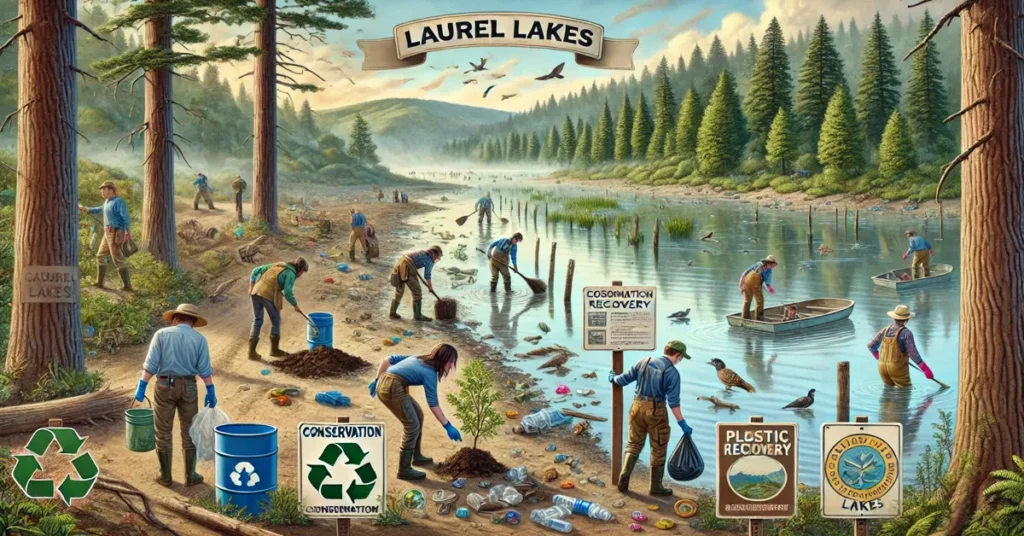
5.1. Educational Programs
Environmental education programs can provide valuable information about Laurel Lakes and their ecological significance.
- School Initiatives: Incorporating lessons about local ecosystems into school curricula can help students develop an appreciation for their environment. Field trips to Lakes can offer hands-on learning experiences and encourage students to engage in conservation efforts.
- Community Workshops: Workshops and seminars can educate residents about sustainable practices, water conservation, and the importance of protecting local ecosystems. Engaging the community in discussions about environmental issues can foster a sense of responsibility and inspire action.
5.2. Volunteer Opportunities
Offering volunteer opportunities for community members can help connect people with their local environment and encourage active participation in conservation efforts.
- Clean-up Events: Organizing clean-up events around Lakes can remove debris and pollutants from the shoreline, improving water quality and enhancing the aesthetic appeal of the area.
- Restoration Projects: Engaging community members in habitat restoration projects allows them to contribute directly to the health of Lakes. Planting native vegetation, building birdhouses, and restoring wetlands are just a
6. The Ecological and Cultural Significance of Laurel Lakes
Laurel Lakes not only serves critical ecological functions but also holds cultural and recreational significance for many communities. Understanding these aspects deepens our appreciation for these environments and highlights the need for their protection.

6.1. Ecological Significance
Laurel Lakes are vital for local ecosystems, supporting various species and contributing to biodiversity. Their significance extends beyond their boundaries, influencing surrounding habitats and communities.
- Habitat for Wildlife: Lakes provide essential habitat for numerous species, including fish, amphibians, birds, and insects. These habitats support complex food webs, contributing to the overall health of local ecosystems.
- Ecosystem Services: Laurel Lakes offer valuable ecosystem services, including flood regulation, water purification, and recreational opportunities. These services are crucial for human well-being and the sustainability of local communities.
6.2. Cultural Significance
Laurel Lakes often hold cultural significance for local communities, serving as sites for recreation, spirituality, and connection to nature.
- Recreational Activities: Many people engage in recreational activities such as fishing, boating, swimming, and birdwatching at Laurel Lakes. These activities promote physical well-being and provide opportunities for community bonding.
- Cultural Traditions: In some cultures, lakes like Lakes are seen as sacred spaces, integral to cultural practices and beliefs. Indigenous communities may have deep connections to these landscapes, emphasizing the importance of preserving their integrity.
7. Climate Change and Its Impact on Laurel Lakes
Climate change poses significant challenges for Laurel Lakes, impacting their hydrology, ecology, and overall health. Understanding these impacts is crucial for developing effective management and conservation strategies.

7.1. Hydrological Changes
Climate change can alter precipitation patterns and water availability, impacting the hydrology of Laurel Lakes.
- Altered Precipitation Patterns: Changes in rainfall patterns can lead to periods of drought or excessive rainfall, affecting water levels in Laurel Lakes. Droughts can reduce water availability, while heavy rainfall can cause flooding and erosion.
- Increased Evaporation Rates: Rising temperatures can increase evaporation rates, further reducing water levels in lakes during dry periods. This can lead to habitat loss for aquatic species and changes in water quality.
7.2. Temperature Effects
Rising water temperatures can have profound effects on the ecological balance of Laurel Lakes.
- Impact on Aquatic Life: Many fish and aquatic species have specific temperature ranges for optimal growth and reproduction. Increased water temperatures can stress these species, leading to shifts in community composition and potential declines in fish populations.
- Algal Blooms: Warmer waters can promote harmful algal blooms, which can deplete oxygen levels and release toxins harmful to aquatic life and human health. These blooms can disrupt the entire ecosystem, leading to significant ecological consequences.
7.3. Ecosystem Resilience
Understanding the resilience of Laurel Lakes in the face of climate change is essential for effective management.
- Natural Resilience Mechanisms: Healthy ecosystems can often withstand and adapt to changes. Preserving biodiversity and ecological integrity is vital for enhancing the resilience of Laurel Lakes to climate impacts.
- Adaptive Management Strategies: Implementing adaptive management strategies that account for climate change can help protect Laurel Lakes. This includes monitoring conditions, adjusting management practices, and involving local communities in conservation efforts.
8. The Role of Policy and Governance in Protecting Laurel Lakes
Effective policy and governance are essential for the conservation and protection of Laurel Lakes. Collaborative approaches involving various stakeholders can enhance the sustainability of these vital ecosystems.
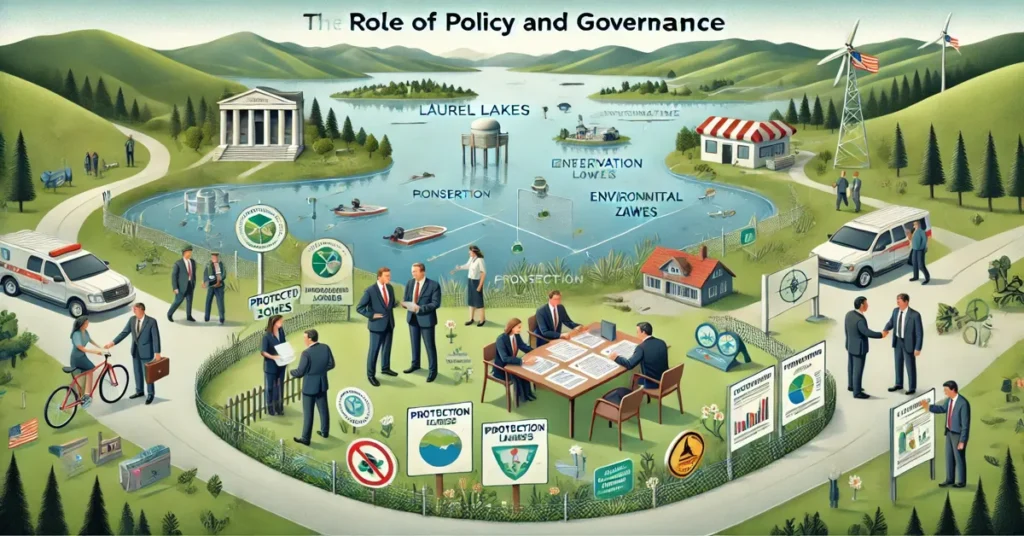
8.1. Regulatory Frameworks
Establishing regulatory frameworks to protect water quality and habitat is critical for the health of Laurel Lakes.
- Water Quality Standards: Governments can implement water quality standards to regulate pollutant discharges into lakes. These regulations help ensure the health of aquatic ecosystems and protect human health.
- Land Use Planning: Zoning regulations can help prevent harmful land use practices near Laurel Lakes, minimizing habitat loss and pollution. Effective land use planning promotes sustainable development while safeguarding natural resources.
8.2. Collaborative Governance
Collaborative governance approaches that engage stakeholders at all levels can enhance the management of Laurel Lakes.
- Stakeholder Engagement: Involving local communities, conservation organizations, government agencies, and scientists in decision-making processes fosters a sense of ownership and responsibility for the lakes. Collaborative efforts can lead to more effective conservation outcomes.
- Integrated Management Strategies: Implementing integrated management strategies that consider the interconnectedness of land and water systems can improve the sustainability of Laurel Lakes. This approach recognizes that healthy watersheds are essential for maintaining lake health.
9. Future Directions for Laurel Lakes Conservation
As we look toward the future, it is essential to prioritize the conservation and sustainable management of Laurel Lakes. Addressing the challenges they face requires proactive measures and a commitment to environmental stewardship.
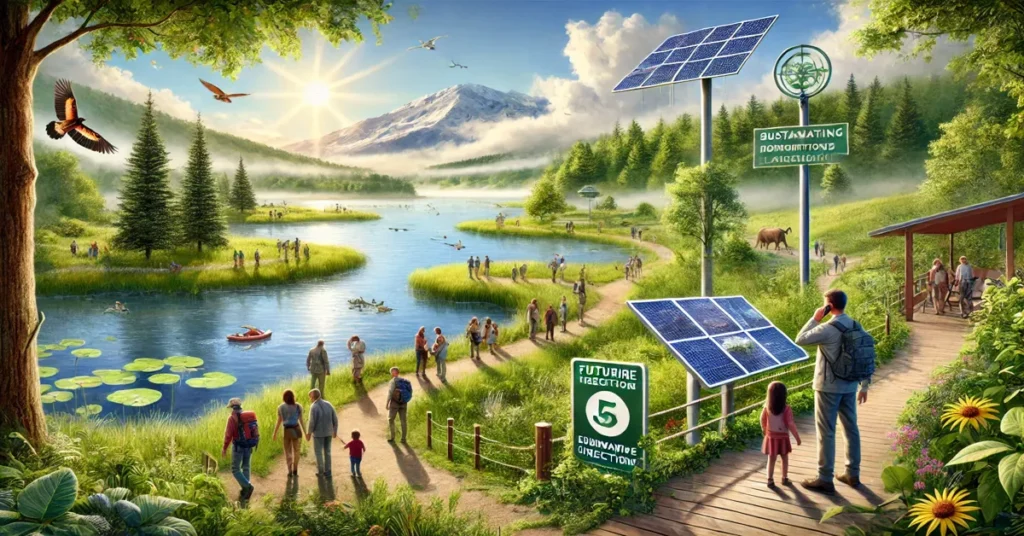
9.1. Research and Innovation
Investing in research and innovative solutions can enhance our understanding of Laurel Lakes and improve conservation efforts.
- Monitoring Technologies: Advancements in monitoring technologies, such as remote sensing and data analytics, can provide valuable insights into the health of Laurel Lakes. These tools can help track changes in water quality, biodiversity, and ecological conditions.
- Restoration Research: Continued research into effective restoration techniques can inform conservation strategies. Studying the success of various restoration efforts can guide future initiatives to improve ecosystem health.
9.2. Education and Awareness
Increasing public awareness about the importance of Laurel Lakes and the challenges they face is essential for fostering a culture of conservation.
- Community Engagement Programs: Engaging local communities in educational initiatives can promote sustainable practices and encourage stewardship. Programs that highlight the ecological significance of Laurel Lakes can inspire residents to take action in their communities.
- Public Campaigns: Public awareness campaigns that focus on the ecological and cultural significance of Laurel Lakes can help build support for conservation initiatives. Highlighting success stories and ongoing efforts can motivate individuals and organizations to get involved.
9.3. Policy Advocacy
Advocating for policies that protect Laurel Lakes is crucial for ensuring their long-term sustainability.
- Supporting Conservation Legislation: Engaging with policymakers to support conservation legislation that protects water quality, habitat, and biodiversity can help safeguard Laurel Lakes for future generations.
- Promoting Sustainable Practices: Advocating for sustainable agricultural and land use practices that minimize impacts on Laurel Lakes can contribute to their health and resilience.
Conclusion: Protecting the Future of Laurel Lakes
Laurel Lakes are vital ecosystems that provide essential services and support a rich tapestry of life. Their ecological significance, combined with their cultural importance, makes it imperative that we prioritize their protection and sustainable management. By understanding the challenges they face, implementing effective conservation strategies, and engaging communities, we can ensure that Laurel Lakes continue to thrive for generations to come.
As we reflect on the beauty and importance of these natural treasures, let us commit to fostering a deeper appreciation for Laurel Lakes and taking action to protect the environments that enrich our lives. Through collaboration, education, and advocacy, we can create a sustainable future for these precious ecosystems, ensuring that they remain vibrant and resilient in the face of a changing world.
Read More: The Environmental Niche of the Mountain Oak: Ecology, Adaptations, and Role in Ecosystems

